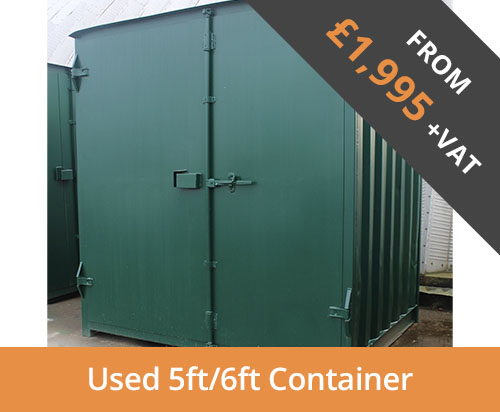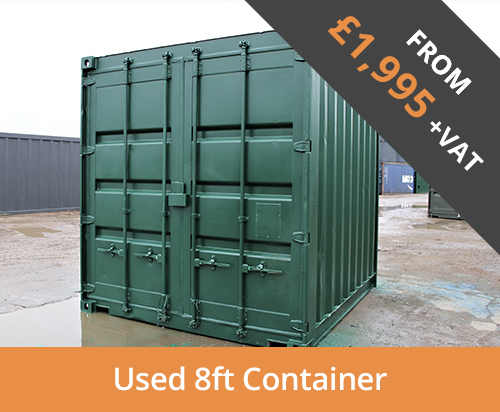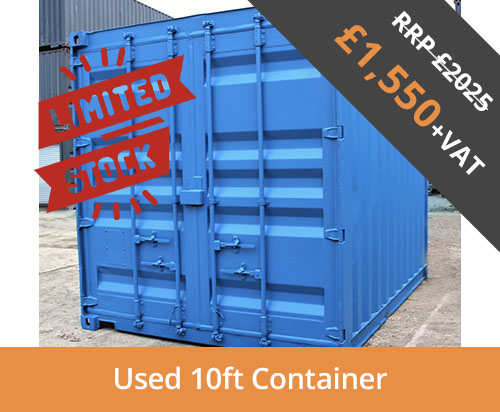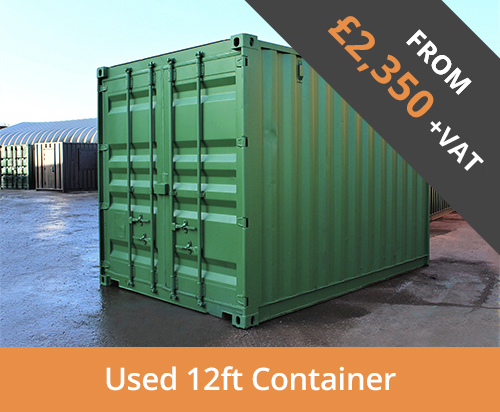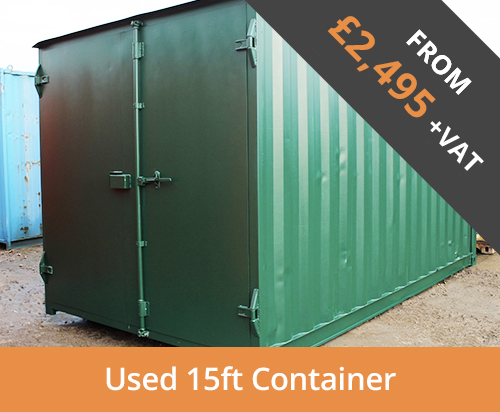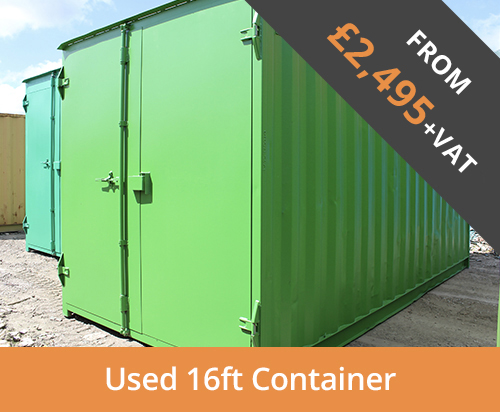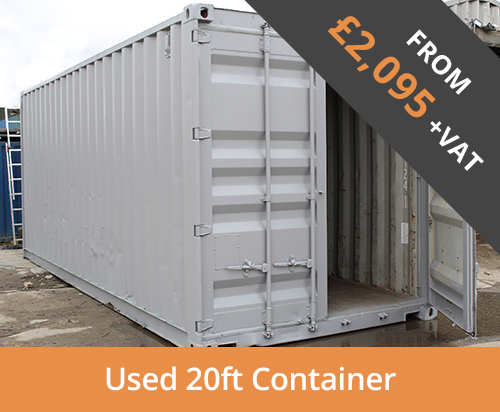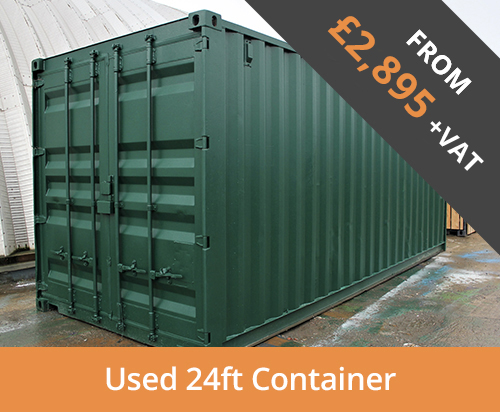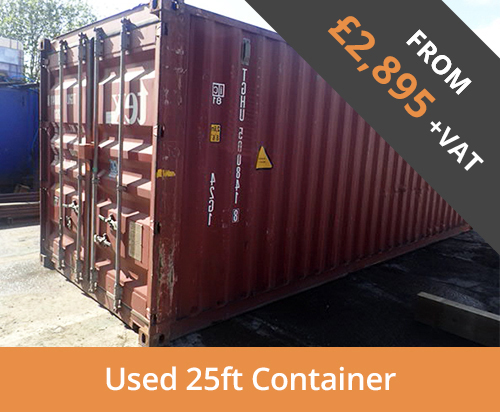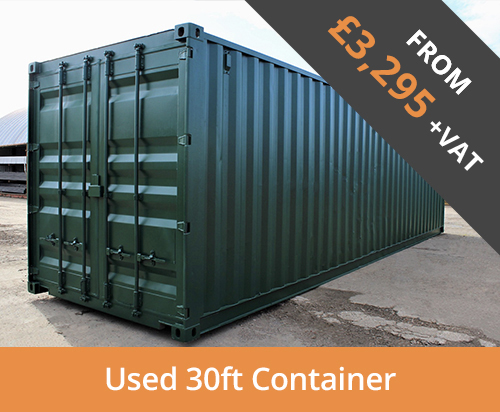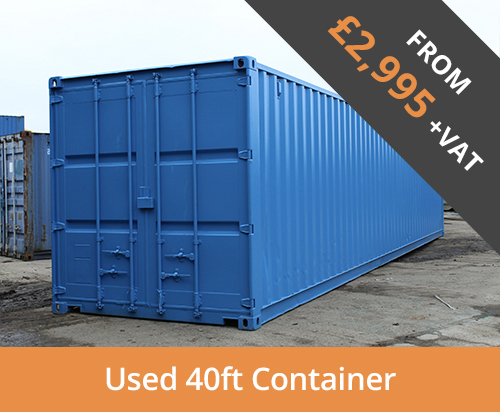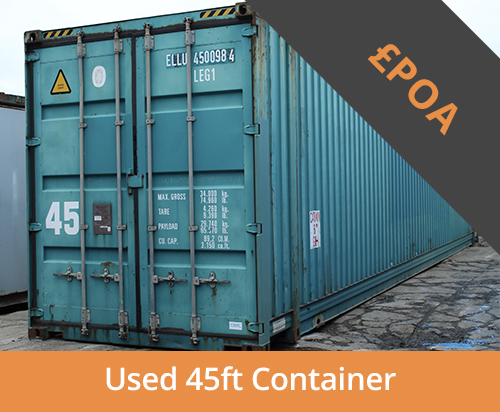How to Choose the Right Size Shipping Container for Your Needs
Tuesday 16 January 2024 Filed in: General
With shipping container sizes ranging from 5ft to 40ft, where do you begin in choosing which size to buy for your personal requirements? Read our guide giving handy tips on the most important things to consider before you buy.
Starting with the obvious, assess the size and amount of items you need to store in the shipping container. A standard 20ft container can hold up to 33 cubic metres, or 1160 cubic feet. For the majority of us, this is hard to visualise, so as a rough guide given based on and calculations and experience from removal and storage companies, this equates to the average contents of a 2-3 bedroom house (probably after decluttering!), or around 300 cardboard boxes measuring 45cm x 45cm x 45cm.
What size are shipping containers?
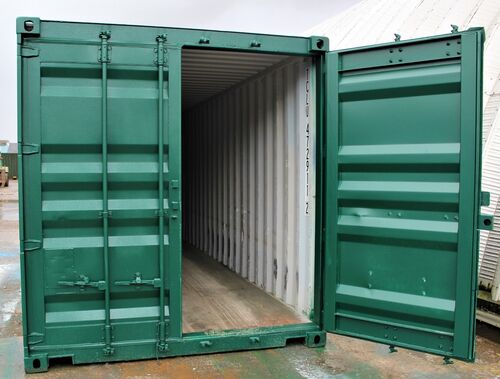 See our shipping container dimensions chart for comprehensive measurements and capacity on all sizes:
See our shipping container dimensions chart for comprehensive measurements and capacity on all sizes:As shipping containers can be used to store a whole bunch of things from household items to building site tools and machinery, and trading stock to sports and leisure equipment, it's not just the floor space in the container that needs taking into account - assess the size, shape and nature of your items when looking at shipping container sizes. Ask yourself:
- Is your storage load stackable? If it's mostly boxes then you can utilise the height capacity of your shipping container, as long as it's done safely. Furniture, bikes etc will take up more floor space, so length is the most important dimension if your storage isn't stackable..
- How much height do you need? High cube shipping containers give you an extra foot of height, so this might be worth bearing in mind when choosing the right size shipping container for you needs. Extra height may also be required if storing plant machinery or equipment that may not clear the doorway of a standard 8ft 6in high container.
- How heavy are your items? All shipping container sizes have a maximum weight tolerance. so be careful not to overload it in attempt to save money by buying a smaller container. This will be a false economy if you damage the container or your goods!
- What is your budget? If you're looking to save money by making do with a smaller container, there are storage containers for sale under 20ft. 10ft shipping containers are the most popular size for smaller storage loads, and can be fitted with doors that are designed to make opening and closing your container a smoother, easier job than the original cargo doors on shipping containers.
- Will you need frequent access to items in the container, or can they stay in situ until they come out of storage? There's more to using a storage container than shoving the goods in and closing the door on them! If you're going to be taking items in and out the container during the storage, then you'll need to leave enough room to manoeuvre! Again, this is where a larger container may be better than a smaller one that's crammed to the rafters that will end up costing you a lot of time unloading stuff to get to what you need.
It's worth bearing in mind that small sized shipping containers are not usually the best value for money per square foot. For example 10ft containers are not a standard build size. They are cut down from 20ft or 40ft boxes, completed with extra steel work before being repainted. This means extra materials and labour resulting in higher costs for the supplier. Therefore the price of a second hand 20ft can actually be around the same sort of level as a smaller cut down container. So you could get extra storage capacity by buying a larger used container without having to fork out much more - and keep your options open for the future if you end up needing more storage space than anticipated!
Once you've considered all the factors you need in choosing what size container to buy, take a look at the most common size shipping containers available.
***Prices are subject to fluctuation - once-used containers also available***
Shipping container sizes and prices
5 Key tips to remember!
- Don't over load your shipping container - size up if in doubt!
- An overloaded container will restrict air-flow which can lead to condensation and damp!
- Look at optional extras such as ply lining or Grafotherm to tackle condensation problems.
- Choose flat panel/S1 doors for quick and easy use.
- Consider side-doors for extra access - these can be fitted in addition to end doors, or as a replacement.

